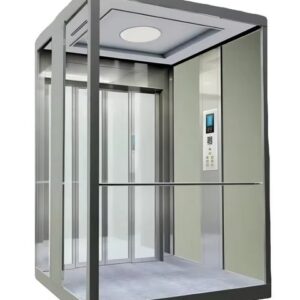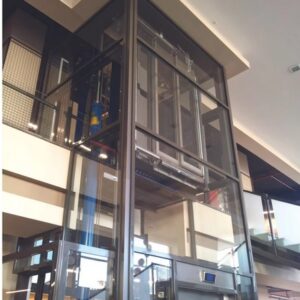Cost of Elevator Lift
The cost of an elevator lift depends on several factors, including its type, size, load capacity, technology, and installation requirements. Hydraulic lifts are generally more affordable, whereas traction and machine room-less elevators offer higher efficiency and durability. Customization, safety features, and automation can also influence the overall cost. Installation expenses vary based on the building structure and labor requirements. Regular maintenance is essential for smooth operation and longevity, ensuring reliability and safety. Investing in a high-quality elevator lift enhances accessibility, convenience, and functionality in commercial and residential buildings.
Product Description
Cost of Elevator Lift
The cost of an elevator lift depends on various factors, including the type, size, capacity, technology, and installation requirements. Different types of elevators, such as hydraulic, traction, and machine room-less lifts, have different pricing structures based on their efficiency and functionality. Hydraulic lifts are commonly used in low to mid-rise buildings and are relatively more affordable, whereas traction and machine room-less elevators are often preferred for high-rise buildings due to their energy efficiency and smoother operation. The size and weight capacity of the elevator also play a crucial role in determining the overall cost. Larger elevators designed to carry heavier loads require more robust construction, advanced lifting mechanisms, and reinforced safety features, which can increase the price. Customization is another factor that impacts the cost. Many commercial and residential buildings prefer customized elevator designs to match the aesthetics of the space, including luxury finishes, glass panels, or decorative lighting. These enhancements add to the total cost, making high-end models more expensive.
Installation and Maintenance Costs
Installation expenses vary significantly depending on the structure of the building and the complexity of the project. New construction projects often allow for easier and more cost-effective elevator installation, while retrofitting an elevator into an existing building can be more expensive due to structural modifications, electrical upgrades, and compliance with safety regulations. Labor costs, permits, and inspection fees also contribute to the total investment required for installing an elevator. Another important consideration is the operational and maintenance cost associated with elevators. Regular servicing and periodic inspections are necessary to ensure smooth functionality and safety. Maintenance costs depend on the type of elevator and the frequency of usage. Hydraulic elevators generally require more maintenance due to the need for oil changes and pump maintenance, whereas traction elevators have fewer maintenance requirements but may involve higher repair costs if components like cables or motors need replacement.
Energy Efficiency and Long-Term Expenses
Energy efficiency is another key factor that influences the long-term expenses of an elevator lift. Modern elevators are designed with energy-saving technologies such as regenerative drives, LED lighting, and standby modes to reduce electricity consumption. While these features may increase the initial cost, they contribute to lower operational expenses over time. Investing in an energy-efficient elevator helps reduce overall building energy consumption, making it a cost-effective choice for businesses and residential properties. Safety and compliance with local building codes and regulations also affect the overall cost. Elevators must meet safety standards, which may require additional features like emergency braking systems, backup power supplies, and advanced control systems. Meeting these requirements ensures the safety of passengers and prevents legal issues, but it can also add to the total cost of installation and maintenance.
Choosing the Right Elevator
Choosing the right elevator depends on the specific needs of a building, including passenger capacity, usage frequency, and available space. Property owners should consider both initial investment and long-term operational costs when selecting an elevator lift. High-quality elevators not only enhance accessibility and convenience but also add value to commercial and residential properties. Proper maintenance and timely upgrades ensure the longevity of the system, making it a worthwhile investment for long-term use.













Reviews
There are no reviews yet.